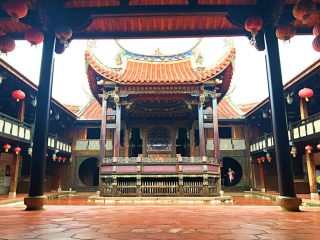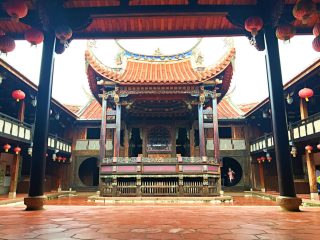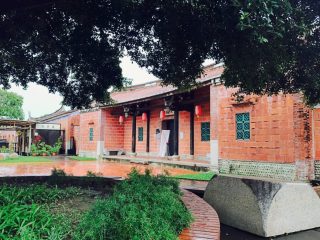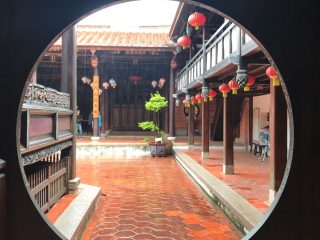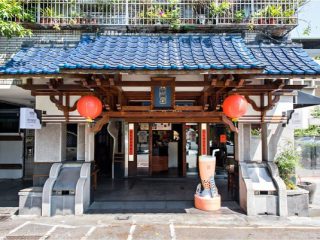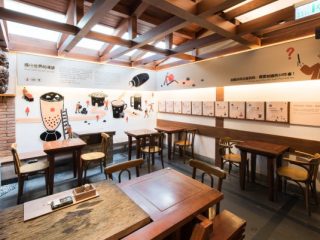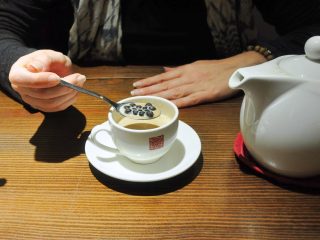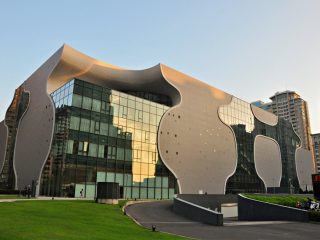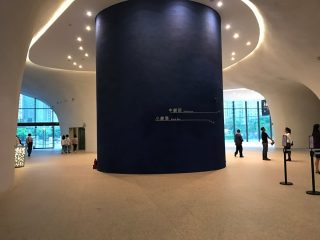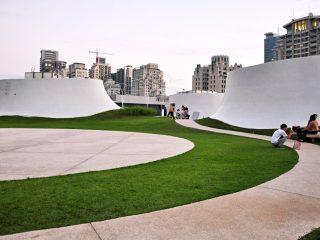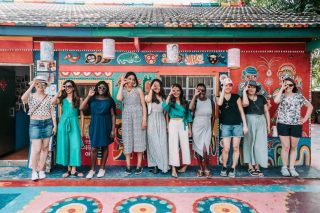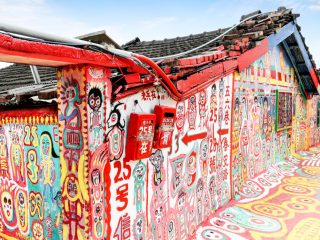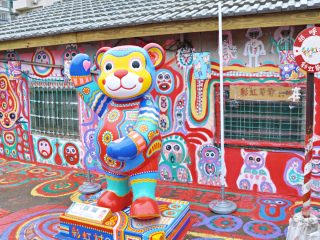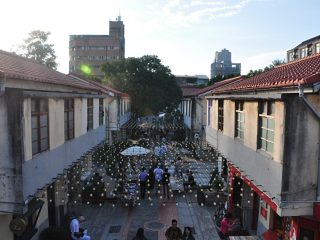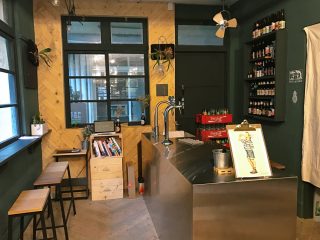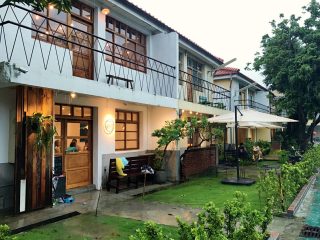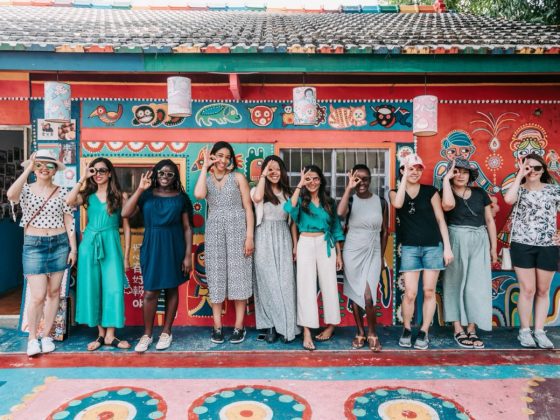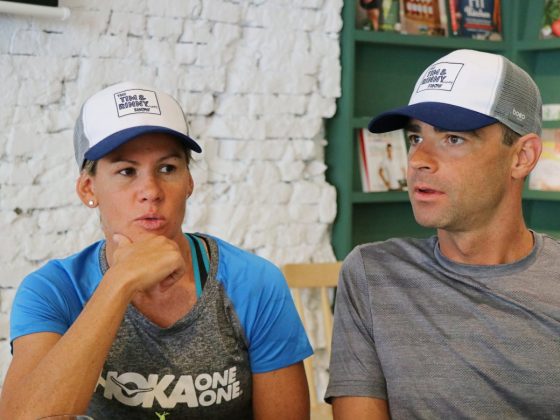When visitors to Taiwan think of the perfect city for day trips, the capital Taipei usually comes first, followed closely by Taiwan’s actual first city (and arguably its cultural heart), Tainan. But Taiwan’s central city, Taichung (which literally means middle Taiwan) is more than just a High Speed Rail stop between north and south. Taichung is quickly emerging as a sort of Taiwanese Chicago, an unpretentious working class town with deep historical chops, a serious art and culture scene, and an unusually quirky (even for Taiwan) vibe. (Read also: Taichung: City on the Move)
Taichung is a quick drive from Taipei, and once we’d gotten out of Taipei proper, traffic lightened up and it was a pleasant cruise down the highway past Taoyuan, Hsinchu and Miaoli. Hitting Taichung, we continued heading south. Our first stop on the tour wouldn’t be inside of the city itself, but a collection of beautiful, traditional houses and gardens known collectively as the Wufeng Lin Family Mansion and Garden.
Going Back in Time: Wufeng Lin Family Mansion & Garden
Arriving around 11, we were greeted by the caretakers, direct descendents of the Wufeng Lin Family themselves, who took us on a tour of the uniquely sprawling structures whose construction began in the Qing dynasty, continuing well into the Japanese colonial period (and containing a plethora of uniquely beautiful architectural elements from both). We walked through the various halls of the main buildings including the Hibiscus-Mirror Studio, a traditional sanheyuan (“三合院”, a three-sided building built around a central courtyard, usually constructed of red kiln-baked bricks), the Hall of Large Flowers, a ceremonial hall once used to host public banquets, and many other structures with wonderfully Chinese-sounding names. Afterwards, we toured the grounds and gardens, marveling at the overall serenity of the place and wishing that we could spend more time exploring.
Alas, lunch awaited – such are the limitations of a day tour in a fairly big city with a lot to experience. We headed over towards the center of town and had lunch at Chun Shui Tang, noted not only for being a pretty cool place to dine, but also for being the first shop in Taiwan to come up with the idea of mixing sticky balls of sweetened tapioca into tea, thus creating the now-synonymous with Taiwanese cuisine bubble milk tea. Having dined and done a fairly deep dive in Taichung’s pre-Republic of China era, it was time to get modern.
Into the Future and Psychedelic: National Theater & Rainbow Village
We headed over to the National Taichung Theater, which is as good an example of Taichung’s modern (Designed by the famous Japanese architect, Ito Toyo) architectural side as the Lin Mansion is of its traditional side. From the outside, the National Taichung Theater is veritable marvel to behold. From the inside, it’s even more fun to explore. We spent about an hour wandering through the National Theater’s wide, curving hallways, checking out stands displaying books, works of folk art, and (strangely enough), those fixed-gear track bikes so trendy with hipsters these days. Alas, the bicycles were for display only, which was too bad. The theater’s rooftop park would make a rather unique cycling venue.
On the subject of unique venues, after the theater we headed over to Rainbow Village, which proved a very interesting juxtaposition to both the classical Wufeng Lin Mansion and the supremely modern National Theater. Indeed, the small collection of single-story houses would be otherwise completely unnoteworthy if not for the dedication of an elderly man surnamed Huang, who decided to fight impending eviction through an extensive open-ended art project that involved covering every paintable surface of the small village with psychedelic artwork. These days, Rainbow Village is considered a must-visit for good reason. The whole place is colorful, quirky and adorable, as is Mr. Huang himself, who still lives there selling posters, postcards bearing his own artwork. But the artist was napping during our visit (he’s in his nineties, and single handedly painting an entire village is hard work for anybody), so we had to content ourselves with strolling the grounds for half an hour and drinking in the visual carnival that is Rainbow Village.
More Art, and a Final Stroll: Calligraphy Greenway & Shen Ji New Village
Now mid-afternoon, we headed back into town, stopping along the way at Calligraphy Greenway, a picturesque park filled with sculpture, artwork, and grandparents doting on their grandchildren and pets in equal measure. Our final scheduled stop for the day was Shen Ji New Village, a hybrid artist’s community/craft market, the sort of which has become pretty popular in Taiwanese cities over the past decade.
Once a residential housing complex, the Shen Ji New Village complex has been reborn as a hub for creatives, with a few dozen art studios, restaurants and craft stores. We walked around the alleys in between the shops themselves, popular with young and old alike, before stepping into an unusual shop serving craft beer, a place whose furniture consisted of merry-go-round animals. After a beverage, we strolled around a bit more, visiting one shop that created custom designed jewelry based on photos of pets, another selling organic soaps and body lotions, and still another serving out-of-this-world pastry and wearable creampuff headgear (a bicycle helmet with a polystyrene molding around the shell). Though the area was only moderately busy during our visit, we’re told that things really heat up on the weekends, when the lanes between the shops themselves are filled with small stalls selling everything from organic produce to handmade craft goods.
Having experienced just a taste of what Taichung had to offer (a single day is never enough in any city in Taiwan, a nation that prides itself on always having more to experience), we hopped back in the car for the drive back to Taipei.
Looking to experience Taichung in a Day? Check out MyTaiwanTour’s Taichung in a Day Tour!
Want to explore Taichung on your own? Check out Twelve Things to do in Taichung or 72 Hours in Taichung, Part 1 (Why?)
Place near by: Alishan: Where the Sun Starts Its Day – A Journey into High-Mountain Alishan National Scenic Area

